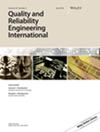介绍一种利用系统动力学评估影响设备可靠性因素的新模式
IF 2.8
3区 工程技术
Q3 ENGINEERING, INDUSTRIAL
引用次数: 0
摘要
本研究通过三种方法研究设备的可靠性(RoE):设备设计可靠性、人的可靠性(HR)和基于维护的可靠性。人的可靠性在最大限度地减少人为错误(HE)和提高 RoE 方面发挥着关键作用。鉴于设备可靠性受多种因素影响,这些技术具有各种制约因素、多种输出和输入。与数学编程和分析模型相比,可靠性领域的模拟方法相对有限。然而,系统动力学(SD)建模非常适合捕捉系统的动态性和复杂性,使其成为长期战略决策的重要工具。在本研究中,采用了 SD 与回归相结合的方法来探讨可靠性与 HE 和利润等关键变量之间的关系。首先,确定影响可靠性的变量,然后利用自变量来了解这些变量之间的过程和相互作用。此外,还采用线性回归法来确定情感变量、可靠性和 HE 之间的关系。为了验证所提方法得出的结果,进行了敏感性分析。结果表明了建议模型的有效性。模拟结果表明,实施员工培训和预防性维护等政策可显著提高 RoE,从而增加组织的销售额和利润。因此,管理者应优先考虑这些变量,并为其分配足够的关注和资源。本文章由计算机程序翻译,如有差异,请以英文原文为准。
Presenting a new model for evaluating the factors affecting equipment reliability using system dynamics
This study examines reliability of equipment (RoE) through three approaches: equipment design reliability, human reliability (HR), and maintenance‐based reliability. HR plays a key role in minimizing human error (HE) and subsequently enhancing RoE. Given that equipment reliability is influenced by numerous factors, these technologies come with various constraints, multiple outputs, and inputs. Compared to mathematical programming and analytical models, simulation methods in the field of reliability are relatively limited. However, system dynamics (SD) modeling is well‐suited to capture dynamics and complexity of systems, making it a valuable tool for long‐term strategic decision‐making. In this study, a combination of SD and regression approaches has been employed to explore the relationship between reliability and key variables such as HE and profit. Initially, the variables influencing reliability are identified, and then SD is utilized to understand the processes and interactions among these variables. Furthermore, linear regression is employed to establish the relationship between affective variables, reliability, and HE. To validate the results obtained from the proposed method, a sensitivity analysis is conducted. The results demonstrate the effectiveness of the proposed model. Simulation results indicate that implementing policies such as employee training and preventive maintenance significantly enhances RoE, leading to increased sales and profits for the organization. Therefore, managers should prioritize these variables and allocate adequate attention and resources to them.
求助全文
通过发布文献求助,成功后即可免费获取论文全文。
去求助
来源期刊
CiteScore
4.90
自引率
21.70%
发文量
181
审稿时长
6 months
期刊介绍:
Quality and Reliability Engineering International is a journal devoted to practical engineering aspects of quality and reliability. A refereed technical journal published eight times per year, it covers the development and practical application of existing theoretical methods, research and industrial practices. Articles in the journal will be concerned with case studies, tutorial-type reviews and also with applications of new or well-known theory to the solution of actual quality and reliability problems in engineering.
Papers describing the use of mathematical and statistical tools to solve real life industrial problems are encouraged, provided that the emphasis is placed on practical applications and demonstrated case studies.
The scope of the journal is intended to include components, physics of failure, equipment and systems from the fields of electronic, electrical, mechanical and systems engineering. The areas of communications, aerospace, automotive, railways, shipboard equipment, control engineering and consumer products are all covered by the journal.
Quality and reliability of hardware as well as software are covered. Papers on software engineering and its impact on product quality and reliability are encouraged. The journal will also cover the management of quality and reliability in the engineering industry.
Special issues on a variety of key topics are published every year and contribute to the enhancement of Quality and Reliability Engineering International as a major reference in its field.

 求助内容:
求助内容: 应助结果提醒方式:
应助结果提醒方式:


